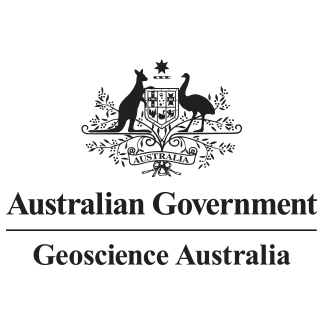Brief description
This image is a ternary image of the radiometric grid of Australia, 2019. The radiometric grid of Australia is derived by merging over 600 airborne gamma-ray spectrometric surveys by the Commonwealth, State and Territory Governments and held in the national radioelement database of Australia. The cell sizes of the original survey grids range from 50 m through 800 m, but most have a cell size of about 100 m. The original survey grids are levelled to each other, and to the Australia Wide Airborne Geophysical Survey (AWAGS). The grids were then re-sampled to generate the Radiometric Map of Australia grids with a cell size of about 100m (0.001 degrees). Since the AWAGS traverses are consistent with the International Atomic Energy Agency’s (IAEA) radioelement datum, the new continental merges are levelled to this datum as well. The data quality varies depending on the survey. The data are processed via standard methods to ensure the response recorded is that due only to the rocks in the ground. The results produce datasets that can be interpreted to reveal the geological structure of the sub-surface. The final grid is checked for quality by GA geophysicists to ensure that the final data released by GA are fit-for-purpose.
The ternary image was generated by combining filtered K, Th and U grids. The grids were assigned the three usual hues of red (for potassium), green (for Thorium) and blue (for Uranium). This ternary image is very useful for both mineral exploration and environmental mapping.
Lineage
Maintenance and Update Frequency: asNeededIssued: 13 04 2020
text: westlimit=112; southlimit=-44; eastlimit=154; northlimit=-9; projection=GDA94 (EPSG:4283)
User Contributed Tags
Login to tag this record with meaningful keywords to make it easier to discover
Download the metadata (pdf) [221 KB]
uri :
https://d28rz98at9flks.cloudfront.net/134857/134857_03_0.pdf![]()
Download the full image package (ers, tif) [3.1 GB]
uri :
https://d28rz98at9flks.cloudfront.net/134857/134857_00_0.zip![]()
Download the image (ers) [1.1 GB]
uri :
https://d28rz98at9flks.cloudfront.net/134857/134857_01_0.zip![]()
Download the image (tif) [1.9 GB]
uri :
https://d28rz98at9flks.cloudfront.net/134857/134857_02_0.zip![]()
- URI : pid.geoscience.gov.au/dataset/ga/134857

- global : 14867699-fdd9-4627-85f0-1275acb34d46


